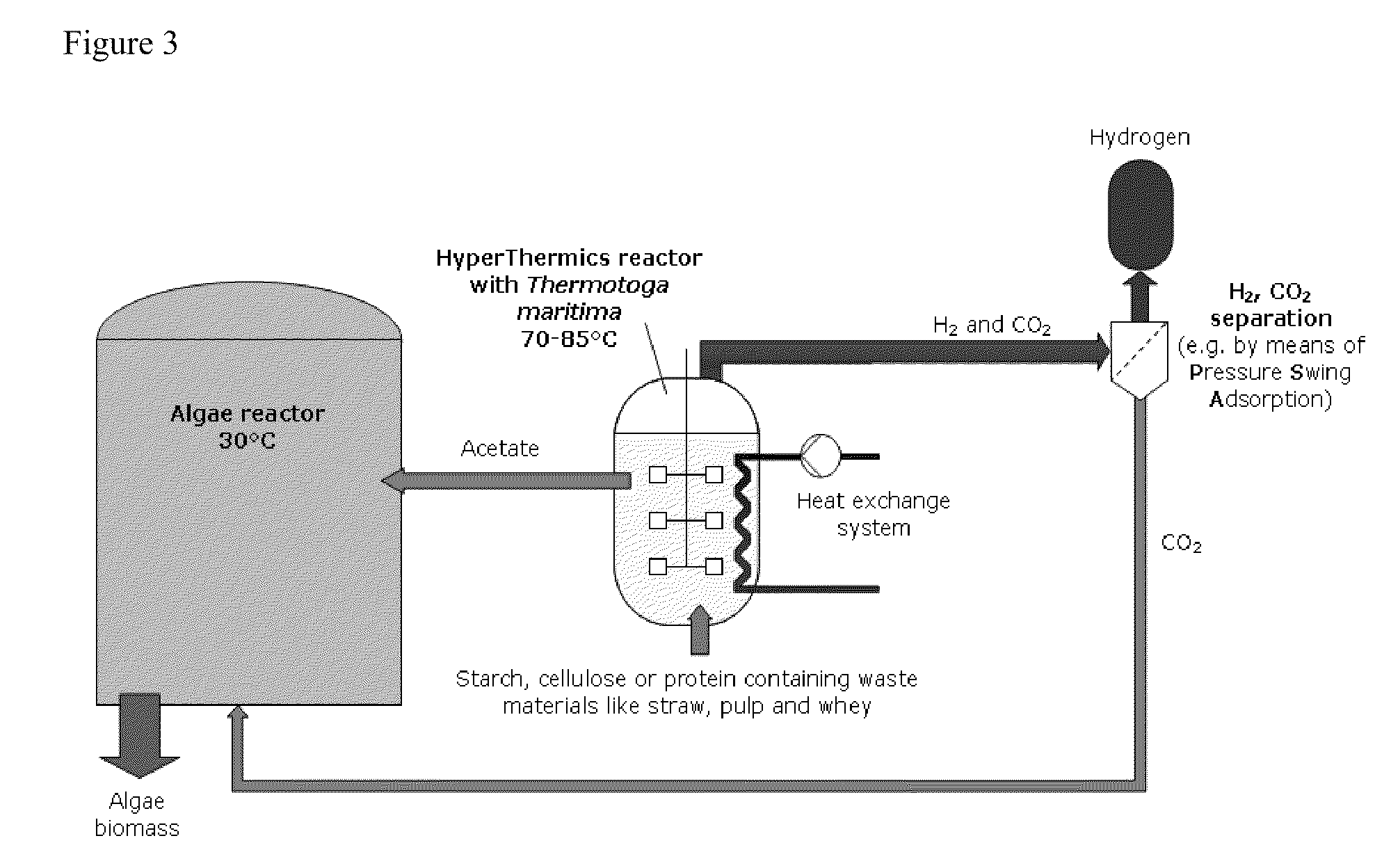Energy production with hyperthermophilic organisms
a technology of hyperthermophilic organisms and energy production, which is applied in the direction of botany equipment and processes, biological water/sewage treatment, biochemistry apparatus, etc., can solve the problems of increasing the cost of conventional energy sources such as oil, coal and nuclear power, and demonstrating environmental harm, etc., to achieve the effect of increasing the production of methan
- Summary
- Abstract
- Description
- Claims
- Application Information
AI Technical Summary
Benefits of technology
Problems solved by technology
Method used
Image
Examples
Embodiment Construction
[0047]The present invention relates to the field of biomass degradation with hyperthermophilic organisms, and in particular to the use of hyperthermophilic degradation to produce heat, ethanol, hydrogen and other energy substrates from a biomass. For convenience, the description of the invention is provided in the following section: A. Hyperthermophilic organisms; B. Biomass; C. Degradation and energy production; D. Treatment of hydrocarbon sources; E. Utilization of acetate; and F. Carbon credit generation.
A. Hyperthermophilic Organisms
[0048]The present invention comtemplates the use of hyperthermophilic organism for fermenting biomass. Thermophilic bacteria are organisms which are capable of growth at elevated temperatures. Unlike the mesophiles, which grow best at temperatures in the range of 25-40 C, or psychrophiles, which grow best at temperatures in the range of 15-20 C, thermophiles grow best at temperatures greater than 50 C. Indeed, some thermophiles grow best at 65-75 C, ...
PUM
| Property | Measurement | Unit |
|---|---|---|
| temperature | aaaaa | aaaaa |
| temperatures | aaaaa | aaaaa |
| temperature | aaaaa | aaaaa |
Abstract
Description
Claims
Application Information
 Login to View More
Login to View More - R&D
- Intellectual Property
- Life Sciences
- Materials
- Tech Scout
- Unparalleled Data Quality
- Higher Quality Content
- 60% Fewer Hallucinations
Browse by: Latest US Patents, China's latest patents, Technical Efficacy Thesaurus, Application Domain, Technology Topic, Popular Technical Reports.
© 2025 PatSnap. All rights reserved.Legal|Privacy policy|Modern Slavery Act Transparency Statement|Sitemap|About US| Contact US: help@patsnap.com



